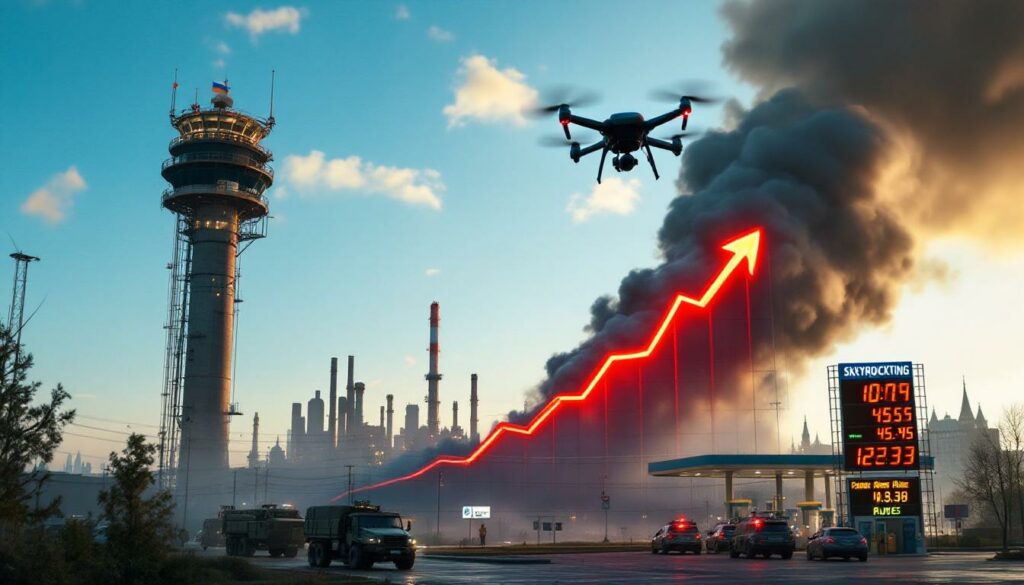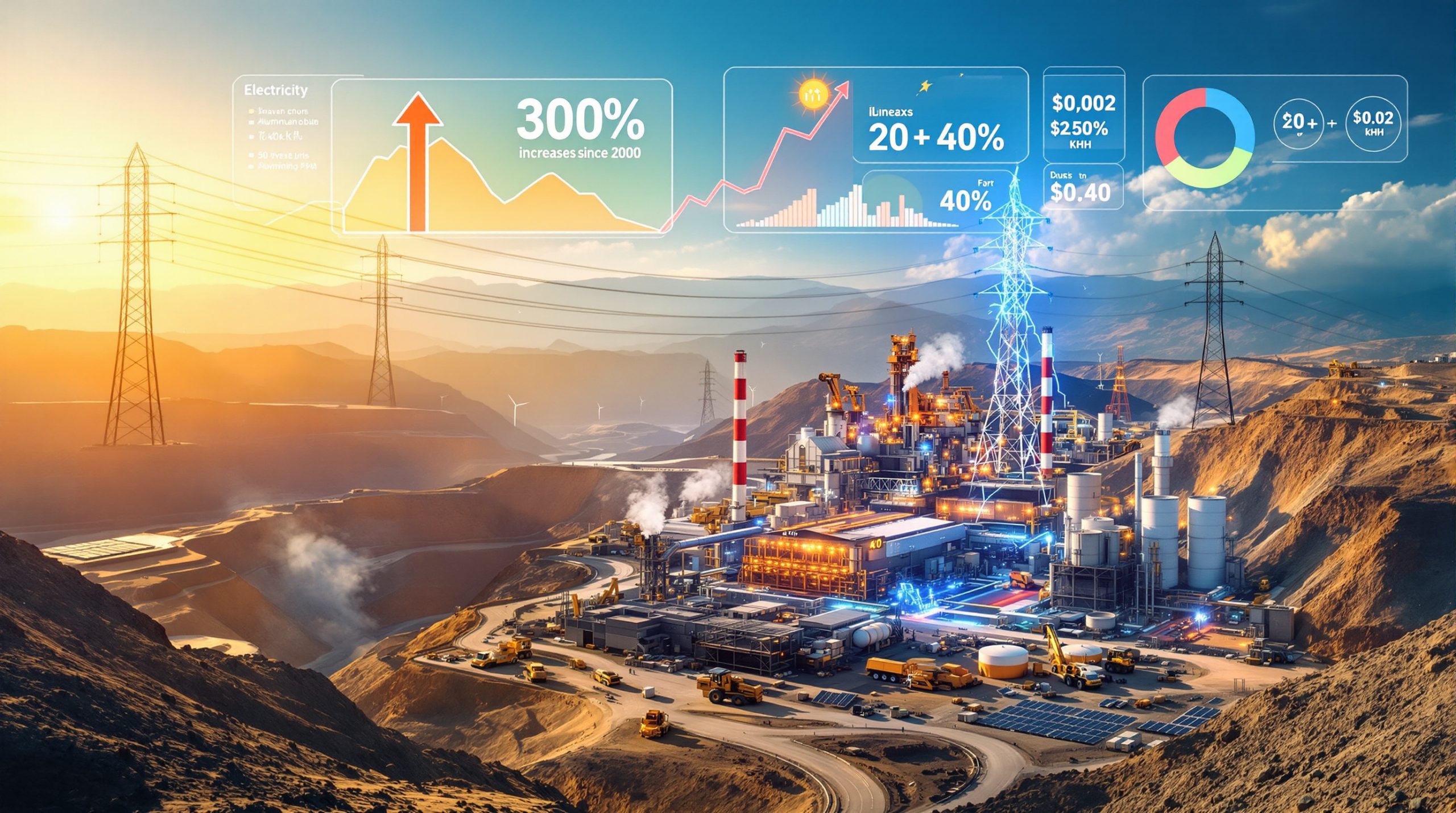How Ukrainian Drone Attacks Shattered Russia's Gasoline Market
The Russian domestic fuel market faces unprecedented disruption following strategic Ukrainian drone strikes on key refineries. These precision attacks have sent shockwaves through Russia's energy infrastructure, causing gasoline prices to skyrocket despite the government's attempts to stabilize the market through export bans and regulatory pressure.
The Perfect Storm: What Triggered Russia's Record-Breaking Gasoline Price Surge?
Ukrainian Drone Strikes Cripple Refining Capacity
On August 2, 2025, Ukrainian forces executed a series of precision drone attacks targeting multiple oil refineries across Russia. Facilities in Ryazan, Penza, Samara, and Voronezh Oblasts sustained significant damage, with the Ryazan refinery particularly affected. According to Oilprice.com, these strategic strikes reduced Russia's crude processing capacity by approximately 40,000 tons per day, creating an immediate supply constraint in domestic markets.
"The damage from the latest attacks has added to the already fragile balance in the domestic fuel market," reported Charles Kennedy of Oilprice.com on August 4, 2025, highlighting how these strikes exacerbated existing vulnerabilities.
Lengthy Repair Timelines Extend the Crisis
Industry assessments indicate that refinery repairs could take between one and six months to complete, depending on the severity of damage at each facility. This extended timeline for restoring full operational capacity means the supply disruption will likely persist well into late 2025 or early 2026.
The technical complexity of modern refineries makes rapid repairs challenging, especially when specialized components must be sourced internationally—a process complicated by ongoing sanctions against Russia's energy sector. Each day of reduced capacity translates to thousands of tons of unproduced gasoline.
Price Escalation Reaches Historic Levels
The impact on prices was immediate and dramatic. On August 4, 2025, the price of premium Ai-95 gasoline surpassed 77,000 rubles ($946.60) per ton on the St. Petersburg International Mercantile Exchange (SPIMEX). This represents an all-time high for Russian gasoline prices, demonstrating the severity of the supply crunch.
The price surge has been exacerbated by market psychology, with traders anticipating continued shortages and bidding up available supplies. This speculative pressure compounds the physical supply constraints to create unprecedented market volatility.
Government Interventions Fail to Stem the Rising Tide
Export Ban Implementation and Limitations
The Kremlin imposed a comprehensive ban on gasoline exports on July 28, 2025, scheduled to remain in effect until the end of August. This policy tool has been repeatedly employed over the past two years as a mechanism to protect domestic supply and control price inflation.
"The Kremlin has used similar temporary restrictions multiple times in the past two years to safeguard domestic supply," noted industry analysts at Oilprice.com. However, the current crisis demonstrates the limitations of this approach when faced with physical production constraints rather than distribution challenges.
Minimal Impact of Redirected Export Volumes
A critical limitation of the export ban strategy is the relatively small proportion of Russian gasoline production typically destined for foreign markets. As Charles Kennedy reported, "Export volumes are far smaller than domestic consumption, meaning that redirecting them to the local market will have a limited impact."
This fundamental market reality explains why "traders were warning just days before the record-breaking spike that the ban may not prevent shortages" (Oilprice.com, August 4, 2025). The market's skepticism proved well-founded as prices continued their upward trajectory despite the export restrictions.
Additional Regulatory Pressures on Oil Companies
Beyond the export ban, Russian authorities are employing administrative leverage to increase domestic supply. "Market participants expect state regulators to pressure oil companies to sell more domestically and delay planned maintenance," according to industry sources cited by Oilprice.com.
These non-market interventions highlight the government's growing concern about the political ramifications of sustained high fuel prices. However, regulatory pressure cannot overcome the physical constraints of damaged refining capacity.
Multiple Factors Exacerbate the Fuel Supply Crisis
Insufficient Retail Network Reserves
A contributing factor to the market's vulnerability has been the failure of distribution networks to maintain adequate buffer inventories. Industry sources indicate that "private retail networks have not built up sufficient fuel reserves this summer" (Oilprice.com, August 4, 2025).
This inventory shortfall stems partly from Russia's elevated interest rate environment, with rates reaching 20%, making inventory financing prohibitively expensive for many market participants. The high cost of capital has effectively discouraged the precautionary stockpiling that might have mitigated the initial impact of the refinery attacks.
Seasonal Demand Pressures Intensify Supply Constraints
The timing of the supply disruption couldn't be worse from a market perspective, coinciding with peak summer driving season when gasoline consumption traditionally reaches its annual high point. This seasonal demand surge has intensified the market imbalance.
The combination of "low domestic stocks, peak seasonal demand, and ongoing refinery repairs are straining the market" beyond its breaking point, according to Oilprice.com analysis. This perfect storm of supply constraints and demand pressures explains the exceptional price levels currently observed.
Transportation Modal Shifts Increase Consumption
An unusual dynamic further complicating the fuel market has been a shift in transportation patterns. According to industry reports, "frequent flight delays in Russia this summer have reportedly driven more travelers to take to the roads, pushing gasoline consumption higher than usual" (Oilprice.com, August 4, 2025).
This modal shift from air to road transportation represents an unanticipated demand shock that compounds the already tight supply situation. The increased road traffic has created localized shortages at retail stations in popular tourist corridors and urban centers.
Ukrainian Military Strategy: Targeting Russia's Energy Infrastructure
Strategic Targeting of Critical Energy Assets
Ukraine's drone campaign against Russian refineries represents a deliberate and sophisticated strategy to undermine Russia's economic and military capabilities. "Ukraine's strikes on Russian oil infrastructure are designed to limit Moscow's fuel export revenues and disrupt supplies to its military," explained energy security analysts cited by Oilprice.com.
These precision strikes demonstrate Ukraine's capability to inflict economic damage deep within Russian territory, targeting vulnerable choke points in Russia's energy supply chain. The attacks reveal a sophisticated understanding of Russia's refining network vulnerabilities.
Long-Term Economic Impact Beyond Immediate Disruption
The cumulative effect of repeated strikes on energy infrastructure extends beyond immediate market disruptions. Each attack requires substantial repair investments, creates lost production revenue, and necessitates increased security expenditures. These costs compound over time, creating a growing economic burden.
Additionally, the psychological impact on energy markets creates a risk premium that persists even after physical repairs are completed. Traders and refiners must now factor in the ongoing threat of future attacks when making investment and operational decisions.
Military Supply Chain Vulnerabilities Exposed
By targeting refineries producing military-grade fuels, Ukrainian forces aim to create logistical challenges for Russian military operations. Modern military vehicles require specialized fuels with precise specifications—shortages of these refined products can impair operational readiness more quickly than crude oil constraints.
This strategic dimension of the attacks highlights Ukraine's focus on high-value targets that generate asymmetric impacts, maximizing the military effect relative to the resources expended in the drone campaign.
Market Outlook: What's Next for Russian Fuel Prices?
Extended Price Elevation Through Fall 2025
The immediate outlook for Russian gasoline prices remains bleak for consumers. "Industry experts expect prices to remain elevated at least until October, when seasonal demand eases and local refineries complete major repairs," according to Oilprice.com's analysis published on August 4, 2025.
However, given that "refinery repairs could extend into early 2026, the current supply squeeze is unlikely to be resolved quickly." This timeline suggests Russian consumers face the prospect of high fuel costs throughout the remainder of summer and well into fall.
Potential for Additional Government Interventions
The persistent nature of the current fuel crisis may force more dramatic government action. As noted by Charles Kennedy, "the Kremlin may be forced to consider additional interventions to avert a politically damaging fuel crisis" beyond the export bans already implemented.
These interventions could include price controls, mandatory production quotas, or consumer subsidies—measures typically avoided by Russian economic authorities but potentially necessary given the political sensitivity of fuel prices.
Structural Market Vulnerabilities Exposed
The current crisis has highlighted fundamental weaknesses in Russia's domestic fuel market, including:
- Insufficient strategic reserves at the retail and wholesale levels
- Limited refining redundancy and excessive concentration of capacity
- Vulnerability of refineries to precision attacks
- Inadequate security measures around critical energy infrastructure
- High dependency on specific refineries for regional supply
"The record price level strongly suggests the market is already grappling with real physical shortages rather than just speculative pressure," warned Oilprice.com analysts, indicating that the structural problems run deeper than temporary market dynamics.
Historical Context: How This Crisis Compares to Previous Fuel Shortages
Unprecedented Production Disruption vs. Distribution Challenges
While Russia has experienced periodic fuel shortages in the past, the current crisis differs fundamentally in its cause. Previous shortages typically stemmed from distribution issues, export incentives, or regulatory decisions—not physical damage to production capacity.
The Kremlin's repeated use of export bans "multiple times in the past two years to safeguard domestic supply" had been sufficient to address previous market imbalances. The failure of this familiar tool to prevent record price spikes demonstrates the unprecedented nature of the current supply disruption.
Record Price Levels Signal Deeper Structural Issues
The extreme price levels reached in August 2025 indicate that market participants recognize the fundamental difference between this crisis and previous episodes. With Ai-95 gasoline surpassing 77,000 rubles ($946.60) per ton, prices have moved beyond levels that could be explained by typical market fluctuations.
This pricing suggests that traders anticipate a prolonged period of supply constraints and are positioning accordingly, creating a self-reinforcing cycle of price increases as market participants compete for limited available supplies.
Combined Effects of Multiple Economic Pressures
The fuel crisis occurs against a backdrop of broader economic challenges for Russia, including:
- International sanctions limiting access to refinery technology and components
- Extraordinarily high interest rates reaching 20%
- General inflation and tariff effects throughout the economy
- Reduced export revenues from energy sales
- Increased military expenditures diverting economic resources
This combination of factors limits the government's flexibility in responding to the specific fuel market disruption and magnifies the impact of the refinery attacks beyond the energy sector.
Broader Economic Implications for Russia
Inflationary Pressure from Transportation Costs
Rising fuel prices inevitably increase transportation costs throughout the economy, triggering a cascade of price increases across various sectors. Food, consumer goods, and services all depend on transportation networks that become more expensive to operate as fuel prices rise.
This transportation cost inflation represents a significant risk to Russia's broader price stability goals and monetary policy. Central bank efforts to control inflation through high interest rates may be undermined by supply-side cost pressures originating in the fuel market.
Political Sensitivity Creates Policy Dilemmas
Gasoline prices hold unique political significance in Russia, as in many countries. The government's aggressive intervention through export bans demonstrates its awareness of this sensitivity and willingness to subordinate market principles to political stability concerns.
However, the limited effectiveness of these interventions creates a challenging policy dilemma. More heavy-handed interventions might temporarily suppress prices but risk creating additional market distortions and shortages, while allowing market forces to operate freely could lead to politically unacceptable price levels.
Energy Security Vulnerabilities Require Strategic Response
The successful targeting of multiple refineries highlights vulnerabilities in Russia's energy security framework that extend beyond the immediate crisis. Addressing these vulnerabilities will require significant investment in:
- Physical security enhancements around critical infrastructure
- Redundant production capacity to mitigate single-point failures
- Strategic reserve capacity throughout the supply chain
- Rapid repair capabilities for damaged facilities
- Distributed production capacity to reduce geographic concentration
These investments represent substantial costs that will strain Russia's already challenged economic resources, creating difficult prioritization decisions for policymakers.
FAQ: Russia's Gasoline Price Crisis
How much have Russian gasoline prices increased following the refinery attacks?
Premium Ai-95 gasoline prices surged past 77,000 rubles ($946.60) per ton on August 4, 2025, representing a record high on the St. Petersburg International Mercantile Exchange (SPIMEX). This price level reflects both the physical supply constraints and market expectations of continued shortages.
When might Russian gasoline prices stabilize?
Industry experts project that prices will remain elevated at least until October 2025, when seasonal demand typically decreases and damaged refineries may complete initial repairs. However, complete normalization of the market may not occur until early 2026, given the extensive repair timeline for severely damaged facilities.
How effective has Russia's gasoline export ban been in controlling prices?
The export ban implemented on July 28, 2025, has proven insufficient to prevent record price increases. This limited effectiveness stems from the relatively small proportion of production typically exported compared to domestic consumption, highlighting the limitations of this policy tool when facing physical production constraints rather than distribution issues.
Which Russian regions were most affected by the refinery attacks?
Refineries in Ryazan, Penza, Samara, and Voronezh Oblasts sustained damage from Ukrainian drone strikes, with the Ryazan facility reportedly experiencing the most significant operational impacts. These regions and their neighboring areas will likely experience the most severe supply constraints and price pressures.
How has the Russian government responded to the fuel crisis beyond the export ban?
Beyond the export ban, regulators are pressuring oil companies to increase domestic sales and postpone scheduled maintenance activities to maximize available supply in the domestic market. These administrative measures represent attempts to mitigate the crisis through non-market interventions, highlighting the severity of the supply disruption.
Furthermore, the impact of the refinery attacks could significantly affect global oil price movements in the coming months, especially as Russia attempts to compensate for domestic shortfalls. The crisis also comes at a time when the global market is already dealing with US oil production decline issues, potentially creating additional price volatility.
"The situation in Russia represents an unprecedented disruption to their domestic fuel market," noted energy analysts at Kyiv Independent. "The combined impact of drone attacks and OPEC production impact decisions could reshape global energy flows for months to come."
In the meantime, some energy analysts are closely watching how this might influence other energy policies globally, including potential changes to Alaska drilling policy as nations seek to enhance energy security. According to a recent analysis from News Online UA, "The vulnerabilities exposed in Russia's refining sector may accelerate energy independence strategies across multiple continents."
Disclaimer: This article contains analysis of geopolitical events and energy markets that includes some speculative elements regarding future market conditions and political responses. Readers should consider multiple information sources when making business or investment decisions related to the Russian energy sector.
Ready to Spot the Next Major Mineral Discovery?
Gain a competitive edge by receiving real-time alerts on significant ASX mineral discoveries through Discovery Alert's proprietary Discovery IQ model, transforming complex geological data into actionable investment insights. Explore how historic discoveries have generated substantial returns by visiting Discovery Alert's dedicated discoveries page and begin your 30-day free trial today.




